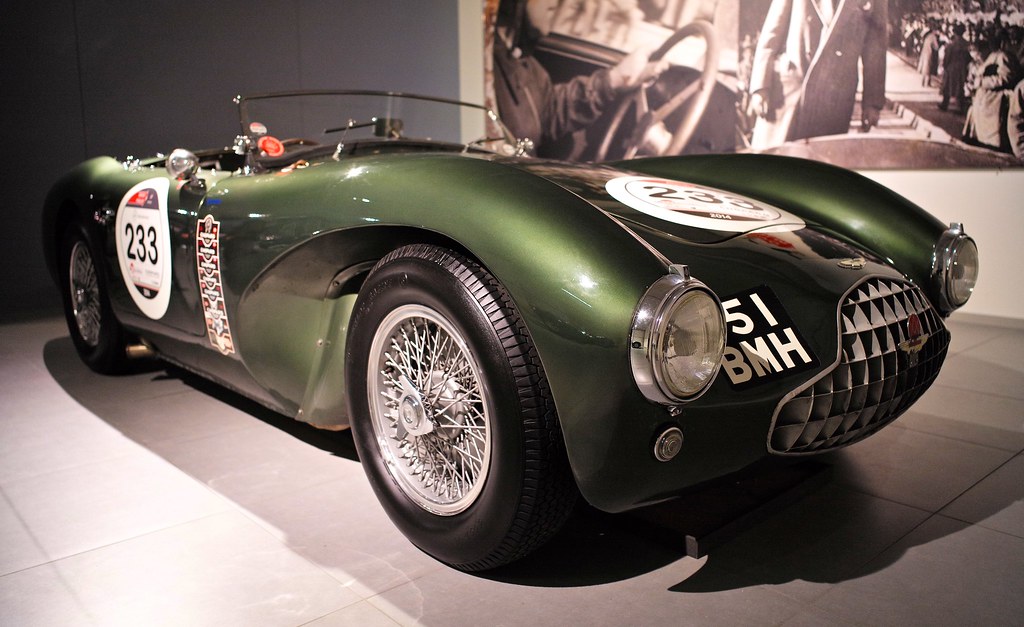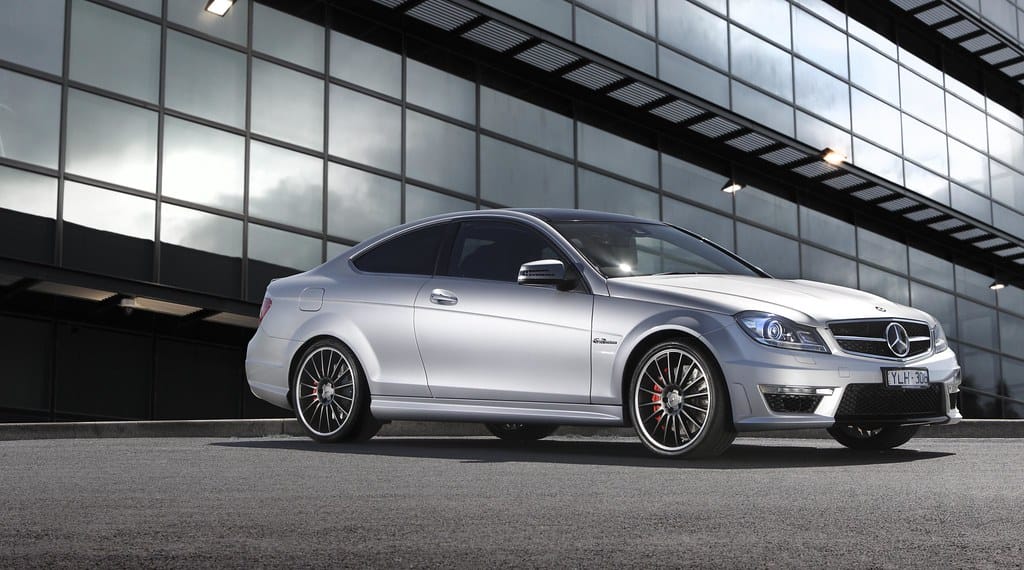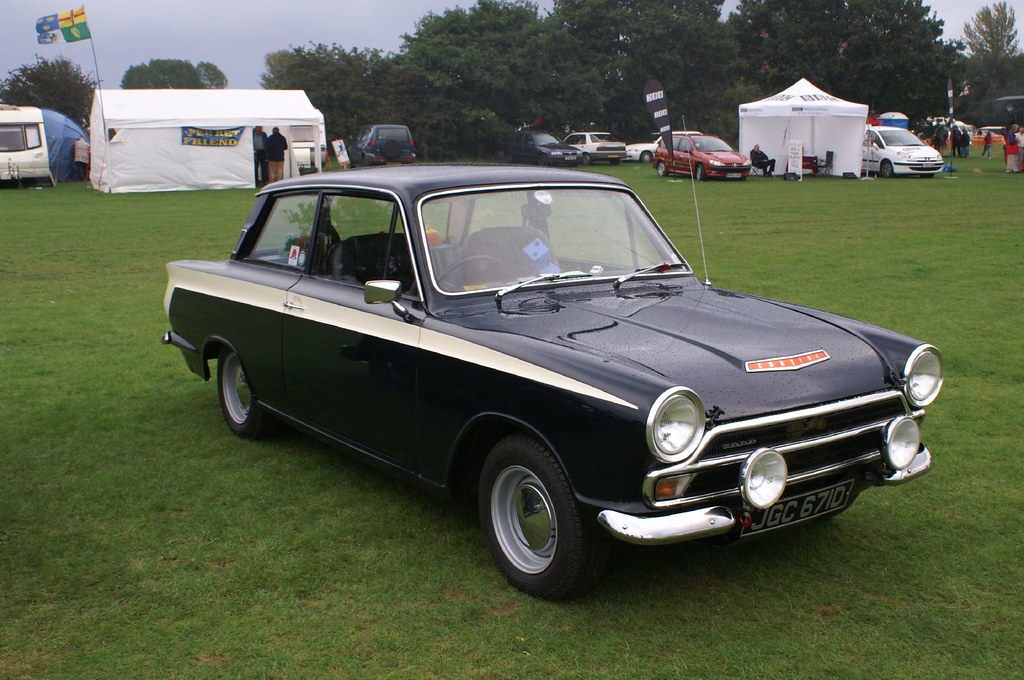
The roar of an engine, the glint of chrome, the unmistakable silhouette—classic cars possess a magic that modern vehicles, for all their advancements, can rarely replicate. There’s a distinct allure in encountering a piece of automotive history, a rolling sculpture that harks back to an era of unbridled innovation and daring design. These aren’t just modes of transportation; they are monuments to engineering prowess and artistic vision, each curve and line telling a story of passion, precision, and an unyielding pursuit of beauty.
While today’s roads are filled with a kaleidoscope of sleek, efficient, and often homogenized vehicles, there once was a time when distinctiveness reigned supreme. Designers pushed boundaries, embracing bold aesthetics and groundbreaking functionalities that birthed some of the most memorable shapes to ever grace asphalt. We often catch glimpses of these magnificent machines at car shows or in private collections, but seeing one casually navigating everyday traffic is an increasingly rare and delightful experience, like spotting a majestic eagle amidst a flock of pigeons.
Join us on a journey through automotive heritage as we shine a spotlight on 15 extraordinary exterior designs. These are the visual marvels that defined generations, showcased revolutionary ideas, and continue to captivate enthusiasts worldwide. Each design element, from daring door mechanisms to sweeping bodylines, represents a pinnacle of its time, an artifact of ingenuity that makes us pause and appreciate the enduring legacy of mechanical art. Prepare to be transported to an age when cars were truly crafted, not just manufactured, and their forms were as much about expression as they were about function.

1. **Mercedes-Benz 300SL Coupe’s Gullwing Doors**
The Mercedes-Benz 300SL Coupe stands as an undisputed design masterpiece, and its most iconic feature, the gullwing doors, is a prime example of form following function in the most spectacular way. When this marvel debuted in 1954, its doors, hinged at the roof and opening upwards like a bird’s wings, immediately captivated the world. While they became an emblem of futuristic appeal, their origin was rooted in necessity, born from the car’s racing prototype heritage.
Rudolf Uhlenhaut’s design for the 300SL transformed a racing car into a street-legal icon. The high, wide sill needed for structural rigidity—a consequence of the car’s innovative tubular space frame chassis—necessitated an unconventional door opening. Rather than a design flourish for aesthetics alone, the gullwing doors were a clever engineering solution to a practical challenge, allowing for passenger ingress and egress despite the substantial side structure.
Beyond their practical origins, these doors lent the 300SL an unparalleled sense of drama and exclusivity. They were a visual spectacle, instantly distinguishing the car from anything else on the road, then or now. Coupled with the 300SL’s graceful body of sheet steel and aluminum, which exuded elegance through its aerodynamic lines, the gullwing doors cemented its status not just as a beautiful car, but as a groundbreaking automotive legend that seamlessly blended cutting-edge engineering with breathtaking appearance. It remains a design that evokes awe, a true rarity in today’s world of conventional car doors.
Car Model Information: 2023 Toyota Camry LE
Name: Mercedes-Benz 300 SL
Caption: 300 SL roadster and gullwinged coupé
Manufacturer: Mercedes-Benz
Production: Mercedes-Benz 300 SLR#Uhlenhaut Coupé
Assembly: Stuttgart
Designer: Friedrich Geiger
Class: Sports car,Grand tourer
BodyStyle: coupé,Roadster (automobile)
Platform: Coupé W198 I, Roadster W198 II
Related: Mercedes-Benz 190 SL
Layout: FR layout
Engine: 2996 cc
Abbr: off
Transmission: Manual transmission
Wheelbase: 2400 mm
Length: 4520 mm
Width: 1790 mm
Height: 1300 mm
Weight: 1500 kg
Predecessor: Mercedes-Benz W194
Successor: Mercedes-Benz W113
Doors: Gull-wing door
Categories: 1960s cars, 24 Hours of Le Mans race cars, All Wikipedia articles needing clarification, All Wikipedia articles written in American English, All articles with vague or ambiguous time
Summary: The Mercedes-Benz 300 SL (chassis code W 198) is a two-seat sports car that was produced by Mercedes-Benz from 1954 to 1957 as a gullwinged coupé and from 1957 to 1963 as a roadster. The 300 SL traces its origins to the company’s 1952 racing car, the W194, and was equipped with a mechanical direct fuel-injection system that increased the power output of its three-liter overhead camshaft straight-six engine.
The 300 SL was capable of reaching 260 km/h (162 mph), earning it a reputation as a sports car racing champion and making it the fastest production car of its time. The car’s iconic gullwing doors and innovative lightweight tubular-frame construction were groundbreaking.
The designation “SL” is an abbreviation of the German term super-leicht, meaning “super-light”, a reference to the car’s racing-bred lightweight construction. The 300 SL was introduced to the American market at the suggestion of Max Hoffman, Mercedes-Benz’s United States importer at the time, who recognized the potential demand for a high-performance sports car among American buyers. The Mercedes-Benz 300 SL remains a highly sought-after classic car and is celebrated for its performance, design, and technological advancements.
Get more information about: Mercedes-Benz 300 SL
Buying a high-performing used car >>>
Brand: Mercedes-Benz Model: 300SL Coupe
Price: $25,600 Mileage: 23,699 mi.

2. **1963 Chevrolet Corvette Coupe’s Split-Window Design**
The 1963 Chevrolet Corvette Sting Ray Coupe is a quintessential American icon, and its distinctive split-window design is a feature that still sparks fervent discussion among enthusiasts. Introduced under the visionary guidance of Bill Mitchell and Larry Shinoda, this bold styling choice for the rear window set the 1963 model apart, making it an instant classic and a significant departure from previous Corvette iterations and conventional styling.
This innovative design saw the rear window divided vertically by a spine, a dramatic flourish that gave the car an aggressive, almost aeronautical appearance. While some found it divisive due to potential visibility issues, its artistic merit was undeniable. It contributed immensely to the car’s unique character, emphasizing its performance-oriented nature and blending aesthetics with unmatched speed, as highlighted by its angular fiberglass body and distinctive ‘Coke bottle’ shape.
The split-window, combined with other striking elements such as hidden headlights and sharp lines, helped establish the 1963 Corvette as a symbol of American automotive excellence. It was a stylistic statement, a defiant declaration of individuality in an era of burgeoning mass production. Today, this particular rear window design is a hallmark of collectibility and a cherished relic, an exterior design rarely seen and instantly recognizable as a true piece of American automotive history.
Car Model Information: 2019 Chevrolet Corvette Stingray
Name: Chevrolet Corvette
Caption: 2021 Chevrolet Corvette C8
Manufacturer: Chevrolet
Production: 1953–present
ModelYears: bulleted list
Assembly: bulleted list
Class: Sports car
BodyStyle: coupé
Layout: Front-engine, rear-wheel-drive layout,Rear mid-engine, rear-wheel-drive layout
Categories: 1950s cars, 1960s cars, 1970s cars, 1980s cars, 1990s cars
Summary: The Chevrolet Corvette is a line of American two-door, two-seater sports cars manufactured and marketed by General Motors under the Chevrolet marque since 1953. Throughout eight generations, indicated sequentially as C1 to C8, the Corvette is noted for its performance, distinctive styling, lightweight fiberglass or composite bodywork, and competitive pricing. The Corvette has had domestic mass-produced two-seater competitors fielded by American Motors, Ford, and Chrysler; it is the only one continuously produced by a United States auto manufacturer. It serves as Chevrolet’s halo car.
In 1953, GM executives accepted a suggestion by Myron Scott, then the assistant director of the Public Relations department, to name the company’s new sports car after the corvette, a small, maneuverable warship. Initially, a relatively modest, lightweight 6‑cylinder convertible, subsequent introductions of V8 engines, competitive chassis innovations, and rear mid-engined layout have gradually moved the Corvette upmarket into the supercar class. In 1963, the second generation was introduced in coupe and convertible styles. The first three Corvette generations (1953–1982) employed body-on-frame construction, and since the C4 generation, introduced in 1983 as an early 1984 model, Corvettes have used GM’s unibody Y‑body platform. All Corvettes used front mid-engine configuration for seven generations, through 2019, and transitioned to a rear mid-engined layout with the C8 generation.
Initially manufactured in Flint, Michigan, and St. Louis, Missouri, the Corvette has been produced in Bowling Green, Kentucky, since 1981, which is also the location of the National Corvette Museum. The Corvette has become widely known as “America’s Sports Car.” Automotive News wrote that after being featured in the early 1960s television show Route 66, “the Corvette became synonymous with freedom and adventure,” ultimately becoming both “the most successful concept car in history and the most popular sports car in history.”
Get more information about: Chevrolet Corvette
Buying a high-performing used car >>>
Brand: Chevrolet Model: Corvette
Price: $47,990 Mileage: 20,872 mi.
Read more about: Before They Were Priceless: Unearthing 7 Legendary 1960s Chevys Only Millionaires Can Afford Today
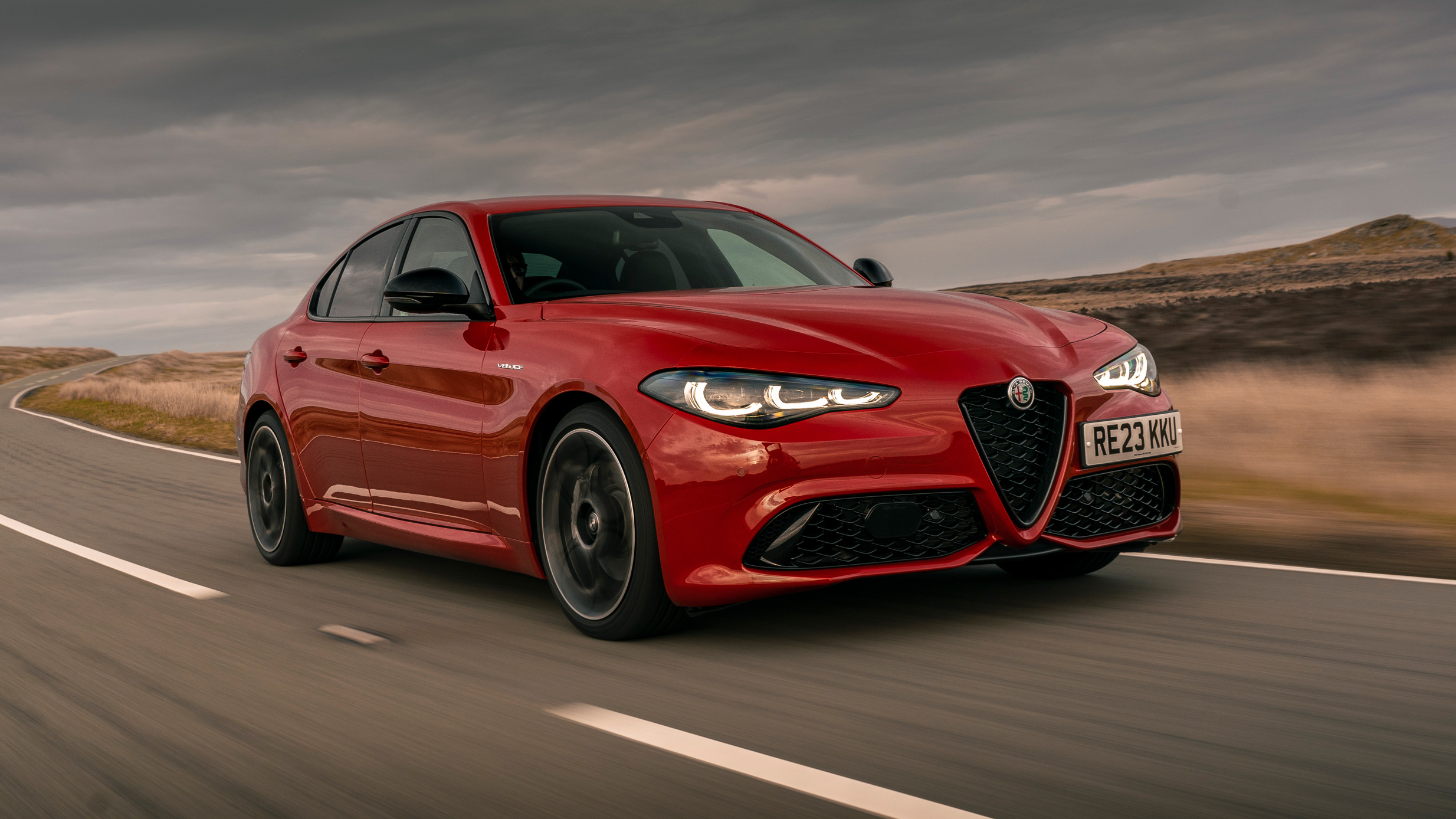
3. **Alfa Romeo 8C Le Mans Speciale’s Racing Elegance**
The Alfa Romeo 8C Le Mans Speciale, a magnificent creation from the 1930s, embodies an era when racing cars were as much about sculptural beauty as they were about raw speed. Designed by Vittorio Jano, this special variant of the Alfa Romeo 8C was meticulously crafted for endurance racing, and its exterior design perfectly marries performance with breathtaking elegance, making it a true rarity on any road.
This classic machine features a sleek aluminum body, custom-built to be as aerodynamic as possible for the grueling Le Mans circuit. Its distinctively sculpted profile, characterized by flowing lines that seem to whisper of motion even when stationary, speaks volumes about its racing heritage. The bold front grille, which served both as an aesthetic signature and a functional element for engine cooling, along with its seamlessly integrated headlights and dynamic fenders, all converge to create a look of sophisticated aggression.
The 8C Le Mans Speciale is not just a car; it’s a testament to a bygone era of motorsport, where form and function were intrinsically linked through artisanal craftsmanship. Its elegance, paired with its powerful performance, has enshrined it as a highly respected classic. The design philosophy behind this car—where every curve and vent served a purpose while simultaneously contributing to an overall artistic vision—is an exterior design seldom replicated with such grace in contemporary vehicles.
Car Model Information: 2023 Toyota Camry LE
Caption: Custom Alfa Romeo 8C (1936)
Name: Alfa Romeo 8C
Manufacturer: Alfa Romeo
Production: 1931–1939
Assembly: Portello (district of Milan)
Class: Luxury car,Sports car,Racing car
Layout: FR layout
Engine: Straight-8
Designer: Vittorio Jano
Categories: 24 Hours of Le Mans race cars, Alfa Romeo sports racing cars, Alfa Romeo vehicles, Articles with short description, Cars introduced in 1931
Summary: The Alfa Romeo 8C was a range of Alfa Romeo road, race and sports cars of the 1930s.
The 8C designates 8 cylinders, and originally a straight 8-cylinder engine. The Vittorio Jano designed 8C was Alfa Romeo’s primary racing engine from its introduction in 1931 to its retirement in 1939. In addition to the two-seater sports cars it was used in the world’s first genuine single-seat Grand Prix racing car, the Monoposto ‘Tipo B’ – P3 from 1932 onwards. In its later development it powered such vehicles as the twin-engined 1935 6.3-litre Bimotore, the 1935 3.8-litre Monoposto 8C 35 Type C, and the Alfa Romeo 8C 2900B Mille Miglia Roadster. It also powered top-of-the-range coach-built production models, including a Touring Spider and Touring Berlinetta.
In 2004 Alfa Romeo revived the 8C name for a V8-engined concept car. This eventually made it into production in 2007, as the 8C Competizione.
Get more information about: Alfa Romeo 8C
Buying a high-performing used car >>>
Brand: Alfa Romeo Model: 8C
Price: $25,600 Mileage: 23,699 mi.

4. **Jaguar E-Type’s “Symphony of Curves”**
The 1962 Jaguar E-Type, a creation of the legendary Malcolm Sayer, is almost universally acclaimed as one of the most beautiful cars ever manufactured, often described as a “symphony of curves.” Its exterior design is a masterclass in organic fluidity, an uninterrupted flow of lines that evokes a sense of both speed and sophisticated grace. The E-Type’s enduring visual appeal is a testament to its harmonious proportions and aerodynamic purity.
The car’s sweeping lines, dramatically long hood, and sleek, low-slung body create an exquisite balance between elegance and performance. This aerodynamic profile, with its rounded tail and iconic oval grille, was developed using mathematical analysis, a testament to Sayer’s pioneering approach, even without the aid of wind-tunnel tests. The result was a stunning car with a remarkably low drag coefficient, a rare blend of scientific precision and artistic intuition.
Complementing these glorious lines are classic details like its wire-spoke wheels, which further enhance its distinguished character. The E-Type’s design is more than just attractive; it’s an immersive experience, a visual journey that continually reveals new layers of artistry. It remains a beloved classic not only for its thrilling performance but primarily for its innovative design, which stands as a sculptural marvel, a rare and cherished sight that evokes passion with every glance.
Car Model Information: 1962 Jaguar E-Type XKE
Sp: uk
Name: Jaguar E-Type
Caption: 1961 E-Type Series 1 3.8-Litre, the first production model of this open two-seater
Aka: Jaguar XK-E (North America),Jaguar V-12
Manufacturer: Jaguar Cars
Production: 1961–1974
Class: Sports car
Predecessor: Jaguar XK150
Related: Jaguar D-Type,Jaguar XJ13
Successor: Jaguar XJS
Layout: FMR layout
Assembly: Coventry,England
Designer: Malcolm Sayer
Categories: 1970s cars, 2+2 coupés, All Wikipedia articles written in British English, All articles with dead external links, All articles with specifically marked weasel-worded phrases
Summary: The Jaguar E-Type, or the Jaguar XK-E for the North American market, is a British front mid-engined sports car that was manufactured by Jaguar Cars Ltd from 1961 to 1974. Its sleek appearance, advanced technologies, high performance, and competitive pricing established it as an icon. The E-Type’s claimed 150 miles per hour (240 km/h) top speed, sub-7-second 0 to 60 mph (97 km/h) acceleration, largely unitary body construction, front and rear independent suspension with disc brakes, mounted inboard at the rear, and rack-and-pinion steering spurred industry-wide changes.
The E-Type was based on Jaguar’s D-Type racing car, which had won the 24 Hours of Le Mans for three consecutive years beginning in 1955.
The E-Type employed what was, for the early 1960s, a novel design principle, with a front subframe carrying the engine, front suspension and front bodywork bolted directly to the body tub. No ladder frame chassis, as was common at the time, was needed and as such the first cars weighed only 1,315 kg (2,899 lb).
It is rumored that, on its debut on 15 March 1961, Enzo Ferrari called it “the most beautiful car ever made”, but this statement is not fully confirmed. In 2004, Sports Car International magazine placed the E-Type at number one on their list of Top Sports Cars of the 1960s. In March 2008, the Jaguar E-Type ranked first in The Daily Telegraph’s online list of the world’s “100 most beautiful cars” of all time.
Get more information about: Jaguar E-Type
Buying a high-performing used car >>>
Brand: Jaguar Model: E-Type
Price: $249,900 Mileage: 76,725 mi.
Read more about: 14 Convertibles from the ’60s and ’70s That Made You Feel Like a Movie Star

5. **Duesenberg Model J’s Pre-War Grandeur**
Stepping back into the pre-war era, the Duesenberg Model J, introduced in 1928, stands as an unrivaled symbol of American luxury and engineering grandeur. Designed by Fred Duesenberg, this vehicle was less of a car and more of a statement, an opulent and massive machine that represented the pinnacle of exclusivity and custom craftsmanship. Its exterior design exudes an air of majesty and an uncompromised commitment to lavishness that is a true relic of its time.
The Model J’s signature elements include an exceptionally long hood, which housed its powerful engine and conveyed an impression of immense power and prestige. Sweeping fenders, often handcrafted and dramatically shaped, flowed seamlessly into the car’s expansive bodywork, adding to its imposing presence. Intricate chrome detailing, meticulously applied to grilles, bumpers, and trim, caught the light and emphasized the vehicle’s luxurious appointments, reflecting an era where ornamentation was a hallmark of status.
What made each Model J particularly special was the collaboration with prestigious coachbuilders, who customized the bodywork to suit the individual tastes of their wealthy clientele. This bespoke approach meant that no two Model Js were exactly alike, each a unique masterpiece of automotive art. The combination of powerful performance and majestic appearance ensures the Duesenberg Model J’s place as a symbol of automotive elegance and luxury, an exterior design embodying a scale and artistry rarely, if ever, seen in modern traffic.
Car Model Information: 2023 Toyota Camry LE
Name: Sfn
Caption: 1930 Duesenberg J Murphy Torpedo Convertible
Manufacturer: Duesenberg
Aka: Duesenberg J,Duesenberg SJ (supercharged),Duesenberg SSJ (short-wheelbase supercharged)
Production: 1928–1937,481 produced (445 Model J, 36 Model SJ)
Assembly: Indianapolis,Indiana,United States
Designer: Gordon Buehrig
Class: Luxury vehicle
BodyStyle: Coachbuilt to owner’s preference
Layout: Front-engine, rear-wheel-drive layout#Front mid-engine, rear-wheel-drive layout
Engine: 420 cuin
Abbr: on
Disp: Sfn
Transmission: Manual transmission
Wheelbase: {{convert,142.5,in,mm,1,abbr=on,disp=flip
Predecessor: Duesenberg Model A
Sp: us
Categories: 1930s cars, All articles with unsourced statements, Articles with short description, Articles with unsourced statements from December 2013, Articles with unsourced statements from June 2012
Summary: The Duesenberg Model J is a luxury automobile made by Duesenberg exclusively in 1928 and offered for ten subsequent years. Intended to compete with the most luxurious and powerful cars in the world, it was introduced in 1928, the year before the stock market crash that led to the Great Depression. Duesenberg Motors Company went bankrupt in 1937.
Get more information about: Duesenberg Model J
Buying a high-performing used car >>>
Brand: Duesenberg Model: Model J
Price: $25,600 Mileage: 23,699 mi.
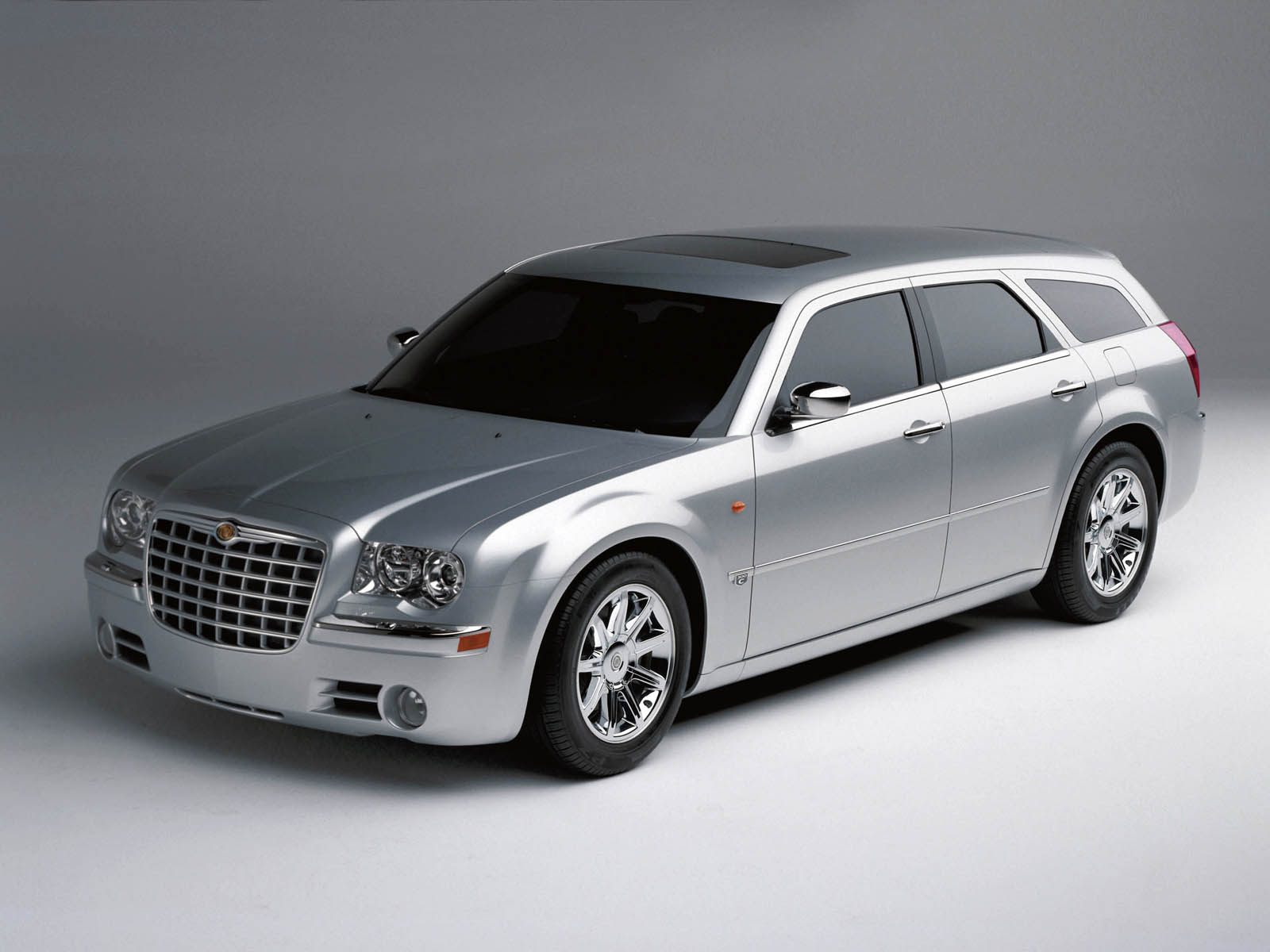
6. **Chrysler 300G’s Sweeping Tailfins**
The Chrysler 300G, a remarkable example of mid-century American automotive design, boldly showcased the dramatic ‘Forward Look’ aesthetic conceptualized by Virgil Exner. Among its most defining exterior features were its sweeping tailfins, an iconic element that captured the optimism and aerospace-inspired styling prevalent in 1960s American car culture. These tailfins weren’t merely decorative; they were a powerful visual statement that defined an era.
The 300G’s design was characterized by an elongated, low profile, complemented by a broad front grille that exuded confidence and power. However, it was the integration of those magnificent tailfins that truly set it apart. Rising gracefully from the rear fenders and tapering to a point, they gave the car a sense of forward motion, even when parked. This bold and refined silhouette was a clear reflection of the era’s aspirations, blending a sense of flight and speed into its road-going form.
The audacious scale and integration of these tailfins are an exterior design rarely, if ever, seen on today’s production vehicles. While smaller, more subtle fins have made fleeting appearances, the sheer dramatic impact of the 300G’s sweeping tailfins represents a bygone era of design extravagance. It’s a testament to a period when designers weren’t afraid to make a grand visual statement, making the Chrysler 300G a standout example of post-war automotive design that continues to turn heads.

7. **1967 Shelby GT500’s Aggressive Stance**
For enthusiasts of raw power fused with stunning visual appeal, the 1967 Shelby GT500 remains an iconic American muscle car. Created by the legendary Carroll Shelby, its exterior design is a potent blend of aggression and beauty, crafting an unmistakable presence that dominates the road. This isn’t just a car; it’s a declaration, its every line screaming performance and intent, making its sight in modern traffic a truly rare and exhilarating experience.
The GT500’s bold profile is instantly recognizable, characterized by a series of aggressive design cues that underscore its potent capabilities. Twin air scoops on the hood were not just for show; they hinted at the massive 428 cubic inch V8 engine beneath, ready to unleash exhilarating performance. Distinctive racing stripes, often in contrasting colors, further amplified its sporty character, while the snarling cobra emblem on the front grille served as a fierce badge of honor, symbolizing its wild nature.
This combination of visual aggression and inherent power solidified the Shelby GT500’s place in automotive history. Its wide, purposeful stance, coupled with its muscular fenders and fastback silhouette, created an exterior design that was both aesthetically pleasing and functionally intimidating. It’s a design philosophy that prioritized performance imagery, resulting in a classic that continues to captivate, a rare beast whose raw beauty and aggressive demeanor are unparalleled in today’s more subdued automotive landscape.
Navigating today’s automotive landscape, it’s easy to overlook the sheer diversity and audacious creativity that once defined car design. Yet, for those with a discerning eye, the remnants of a glorious past continue to inspire. We now delve deeper into more of these captivating exterior designs, elements that have sculpted automotive history but have largely receded from our everyday view, making their reappearance a moment to savor.
Read more about: Everyone Wants These 14 Classic Cars In Their Garage: A Deep Dive for Enthusiasts
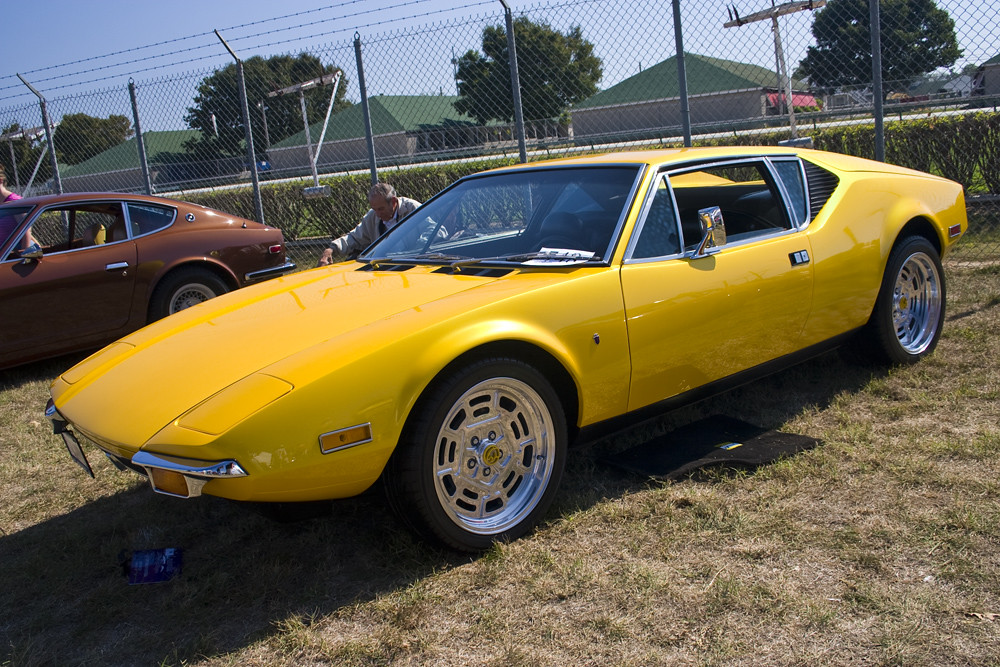
8. **DeTomaso Pantera’s Italian-American Wedge Profile**
The DeTomaso Pantera, hitting the scene in 1971, stands as a thrilling testament to cross-cultural automotive genius. It’s a magnificent ‘fusion of Italian styling and American muscle,’ a design brief that yielded a truly distinctive machine. Crafted by Tom Tjaarda at Ghia, its exterior is immediately striking, characterized by sharp lines, a remarkably low profile, and that unmistakable wedge-shaped body.
This radical wedge profile was not just an aesthetic choice; it powerfully conveyed a sense of ‘speed and aggression’ that few cars of its era could match. The Pantera wasn’t merely styled to look fast; its design was an integral part of its performance identity. Beneath its sleek skin, a mid-mounted Ford 351 Cleveland V8 engine delivered ‘impressive performance,’ underscoring that its bold looks were backed by serious power.
The Pantera’s design was a bold statement, embodying the spirit of the 1970s while pushing boundaries. Its unique ‘wedge-shaped body’ remains a standout example of that decade’s ‘automotive design,’ skillfully ‘combining raw power with sleek aesthetics.’ This daring profile is a rare sight today, a relic of an era when designers weren’t afraid to carve out genuinely distinctive silhouettes.
Car Model Information: 1972 DeTomaso Pantera
Name: De Tomaso Pantera
Caption: De Tomaso Pantera GT5-S
Manufacturer: De Tomaso
Assembly: Modena
Production: 1971–1992 (7,260 produced)
Designer: Tom Tjaarda,Marcello Gandini
Class: Sports car
BodyStyle: coupé
Layout: Rear mid-engine, rear-wheel-drive layout
Engine: ubl
Abbr: on – later spec
Order: Ford small block engine#351W
Transmission: Manual transmission,List of ZF transmissions
Wheelbase: 2500 mm
Length: 158 in
Disp: flip – later spec
Width: 67 in
Height: 1100 mm
Weight: 1474 kg
Predecessor: De Tomaso Mangusta
Successor: De Tomaso Guarà
Categories: 1980s cars, 1990s cars, All Wikipedia articles needing clarification, Articles with hAudio microformats, Articles with short description
Summary: The De Tomaso Pantera is a mid-engine sports car produced by Italian automobile manufacturer De Tomaso from 1971 to 1992. Italian for “Panther”, the Pantera was the automaker’s most popular model, with over 7,000 manufactured over its twenty-year production run. More than three quarters of the production were sold by American Lincoln-Mercury dealers from 1972 to 1975; after this agreement ended De Tomaso kept manufacturing the car in ever smaller numbers into the early 1990s.
Get more information about: De Tomaso Pantera
Buying a high-performing used car >>>
Brand: DeTomaso Model: Pantera
Price: $139,995 Mileage: 18,864 mi.
Read more about: Reviving Legends: A Deep Dive into 12 Iconic Classic Car Reboots and Visionary Restorations
%2C_5._April_2012%2C_D%C3%BCsseldorf.jpg/1200px-Bugatti_Veyron_16.4_%E2%80%93_Frontansicht_(1)%2C_5._April_2012%2C_D%C3%BCsseldorf.jpg)
9. **Bugatti Type 57SC Atlantic’s Riveted Dorsal Seam**
To call the Bugatti Type 57SC Atlantic an automobile is to understate its true nature; it is, without question, a rolling ‘masterclass in automotive artistry.’ Designed by Jean Bugatti in the 1930s, this vehicle’s aesthetic goes beyond mere transportation, presenting a sculptural form that transcends time. Its exterior elements combine to create one of the most unique and coveted designs in history.
A defining and utterly singular feature of the Atlantic is its ‘riveted dorsal seam.’ This prominent spine runs the entire length of the car, a visible declaration of its construction from ‘lightweight magnesium alloy.’ While perhaps unusual to modern eyes, this seam was a functional necessity, a deliberate design choice that became an iconic stylistic flourish, lending an industrial elegance to its ‘flowing, teardrop-shaped body.’
The dorsal seam, along with the Atlantic’s ‘long sweeping fenders and graceful curves,’ contribute to its ‘unique and elegant silhouette,’ giving the car ‘a sense of motion even when stationary.’ This blend of engineering practicality and unparalleled artistry makes the Type 57SC Atlantic a legendary machine. Its riveted spine is a powerful reminder of bespoke craftsmanship, a design element virtually nonexistent on today’s roads, embodying ‘beauty, rarity, and craftsmanship.’
Car Model Information: 2023 Toyota Camry LE
Name: Bugatti Type 57
Caption: 1936 Bugatti Type 57 Atalante
Manufacturer: Bugatti
Assembly: Molsheim
Production: 1934–1940,710 produced
Designer: Jean Bugatti
Class: Grand tourer
Engine: DOHC,Straight-8
Predecessor: Bugatti Type 49
Successor: Bugatti Type 101
Categories: 24 Hours of Le Mans race cars, Articles with short description, Bugatti automobiles, CS1 Romanian-language sources (ro), Cars introduced in 1934
Summary: The Bugatti Type 57 and later variants (including the famous Atlantic and Atalante) was a grand tourer built from 1934 through 1940. It was an entirely new design created by Jean Bugatti, son of founder Ettore. A total of 710 Type 57s were produced.
Type 57s used a straight-8 twin-cam engine of 3.3 L (3257 cc/198 in³) displacement. Bore and stroke were 72 mm by 100 mm based on that of the Type 49 but heavily modified by Jean Bugatti, unlike the single cam engines of the Type 49 and earlier models. The engines of the Type 50, 51 used bevel gears at the front of the engine to transmit power from the crankshaft, whereas the Type 57 used a train of spur gears at the rear of the engine, with fiber gear wheels on the camshafts to achieve more silence in operation.
There were two basic variants of the Type 57 car:
The original Type 57
The lowered Type 57S/SC
The Type 57 chassis and engine was revived in 1951 as the Bugatti Type 101. A rediscovered Type 57 was sold for 3.4 million euros at auction on 7 February 2009 at a motor show in Paris.
Get more information about: Bugatti Type 57
Buying a high-performing used car >>>
Brand: Bugatti Model: Type 57SC Atlantic
Price: $25,600 Mileage: 23,699 mi.
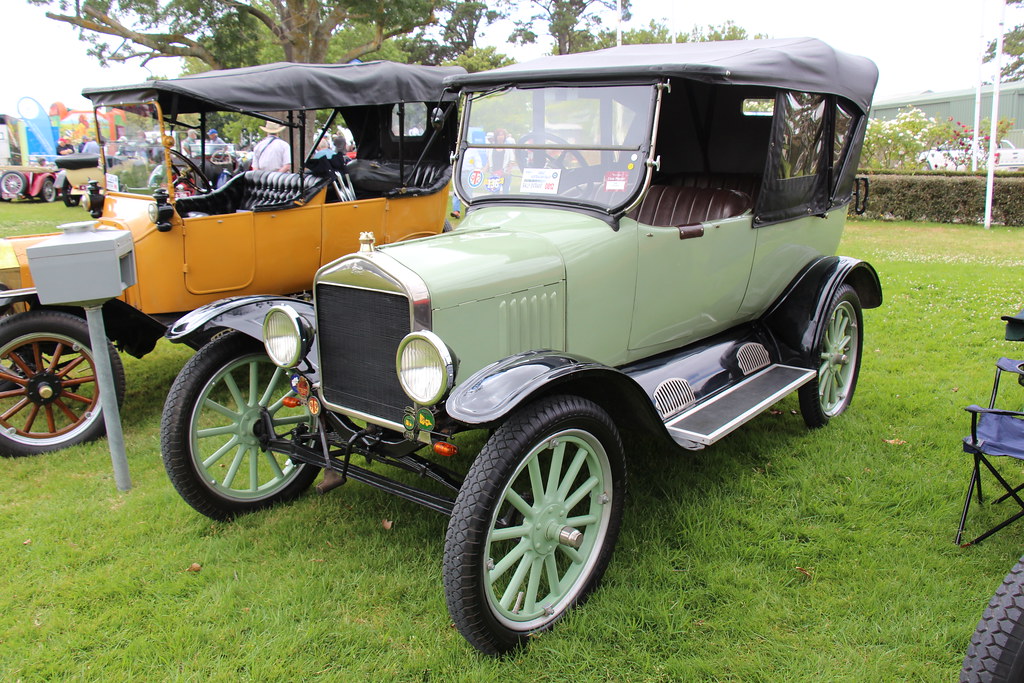
10. **Ford Model T’s Utilitarian Boxy Form**
The Ford Model T, first appearing in 1908, is far more than just a car; it’s a monumental ‘revolutionary vehicle that transformed the automotive industry.’ While its design might be characterized as ‘simple and utilitarian,’ to view it through a purely aesthetic lens misses its profound historical impact. The Model T was born of necessity and practicality, principles deeply embedded in its very form.
Its ‘boxy shape,’ combined with a ‘high stance, and large spoked wheels,’ perfectly reflected its design priorities: ‘durability and functionality.’ This was a car built for the masses, designed to navigate rough roads and perform reliably, rather than to dazzle with intricate curves or luxurious appointments. Every line and panel spoke to its purpose as an affordable, robust, and accessible mode of transportation for the average American.
The Model T’s minimalist, ‘boxy’ exterior was a blueprint for efficiency, allowing for ‘mass production’ and making car ownership a reality for millions. Its lasting appeal isn’t found in exotic beauty but in its foundational role in democratizing mobility. This ‘simple and utilitarian’ form, a cornerstone of early automotive history, stands in stark contrast to the sleek, complex designs of today, making its occasional appearance a genuine glimpse into the birth of motoring.
Car Model Information: 2023 Toyota Camry LE
Caption: 1925 Ford Model T Touring Car
Manufacturer: Ford Motor Company
Production: October 1908 – May 1927
Assembly: collapsible list
Designer: Childe Harold Wills
Class: Economy car
BodyStyle: collapsible list
Layout: FMR layout
Engine: straight-4
Transmission: planetary gear
Wheelbase: 100.0 in
Abbr: on (1912 roadster)
Length: 134 in
Width: 1676 mm
Height: 1860 mm
Weight: convert
Predecessor: Ford Model N
Successor: Ford Model A (1927–1931)
Categories: 1900s cars, 1908 establishments in the United States, 1910s cars, 1920s cars, All articles needing additional references
Summary: The Ford Model T is an automobile that was produced by the Ford Motor Company from October 1, 1908, to May 26, 1927. It is generally regarded as the first mass-affordable automobile, which made car travel available to middle-class Americans. The relatively low price was partly the result of Ford’s efficient fabrication, including assembly line production instead of individual handcrafting. The savings from mass production allowed the price to decline from $780 in 1910 (equivalent to $26,322 in 2024) to $290 in 1924 ($5,321 in 2024 dollars). It was mainly designed by three engineers, Joseph A. Galamb (the main engineer), Eugene Farkas, and Childe Harold Wills. The Model T was colloquially known as the “Tin Lizzie”.
The Ford Model T was named the most influential car of the 20th century in the 1999 Car of the Century competition, ahead of the BMC Mini, Citroën DS, and Volkswagen Beetle. Ford’s Model T was successful not only because it provided inexpensive transportation on a massive scale, but also because the car signified innovation for the rising middle class and became a powerful symbol of the United States’ age of modernization. With over 15 million sold, it was the most sold car in history before being surpassed by the Volkswagen Beetle in 1972.
Get more information about: Ford Model T
Buying a high-performing used car >>>
Brand: Ford Model: Model T
Price: $25,600 Mileage: 23,699 mi.
Read more about: Beyond the Gridiron: A Curated Look at Travis Kelce’s Multi-Million Dollar Automotive Collection, from Bespoke Luxury to Electrified Classics

11. **Porsche 356B Coupe’s Timeless Curvilinear Design**
In the realm of classic sports cars, the Porsche 356B Coupe, introduced in 1959, is revered as ‘the epitome of understated beauty.’ Its design, overseen by Erwin Komenda, is a masterclass in elegant simplicity, proving that true beauty doesn’t require ostentation. This refined version of the iconic 356 series masterfully retains ‘the smooth curves and lightweight construction that Porsche is known for.’
The car’s signature ‘curvaceous body’ is a harmonious flow of lines, subtly accented by ‘minimalist chrome accents and teardrop-shaped headlights.’ These elements combine to give the 356B a ‘timeless appeal,’ a visual harmony that feels as fresh and engaging today as it did over six decades ago. It’s a design that prioritizes purity of form, eschewing unnecessary embellishment to achieve a classic, elegant silhouette.
This curvilinear design is not merely pretty; it’s functionally aerodynamic, a testament to Porsche’s engineering philosophy. The 356B Coupe ‘continues to be admired by enthusiasts for its harmonious blend of design and performance,’ a reflection of how Komenda’s vision created a car that is both visually captivating and dynamically capable. Its enduring elegance and unpretentious beauty are a rare and welcome sight on modern roads.
Car Model Information: 2023 Toyota Camry LE
Name: Porsche 356
Manufacturer: unbulleted list
Production: 1948–1965
Assembly: Gmünd, Carinthia
Successor: Porsche 911 (classic)
Caption: Porsche 356 C coupé
Class: Sports car
Related: unbulleted list
Layout: Rear-engine, rear-wheel-drive layout
BodyStyle: unbulleted list
Designer: Ferry Porsche,Erwin Komenda
Wheelbase: 82.7 in
Abbr: on
Order: flip
Length: convert
Width: 65.4 in
Height: convert
Weight: convert
Categories: 1950s cars, 1960s cars, 24 Hours of Le Mans race cars, All Wikipedia articles written in American English, All articles containing potentially dated statements
Summary: The Porsche 356 is a rear-engine sports car, and the first-ever production Porsche model.
The 356 is a lightweight and nimble-handling, rear-engine, rear-wheel drive, two-door available both in hardtop coupé and open configurations. Engineering innovations continued during the years of manufacture, contributing to its motorsports success and popularity. Production started in 1948 at Gmünd, Austria, where Porsche built approximately 50 cars. In 1950 the factory relocated to Zuffenhausen, Germany, and general production of the 356 continued until April 1965, well after the replacement model 911 made its September 1964 debut. Of the 76,000 originally produced, approximately half survive. The 356 was first produced by Austrian company Porsche Konstruktionen GesmbH (1948–1949), and then by German company Dr. Ing. h. c. F. Porsche GmbH (1950–1965). It was Porsche’s first production automobile. Earlier cars designed by the Austrian company include Cisitalia Grand Prix race car, the Volkswagen Beetle, and Auto Union Grand Prix cars.
The original price in 1948 for the 356 coupe was US$3,750 (equivalent to $49,100 in 2024) (official general USD inflation). The 356 cabriolet cost US$4,250 (equivalent to $55,600 in 2024).
Get more information about: Porsche 356
Buying a high-performing used car >>>
Brand: Porsche Model: 356B Coupe
Price: $25,600 Mileage: 23,699 mi.
12. **Iconic Wire-Spoke Wheels**
While often perceived as a detail, the choice of wheels dramatically impacts a car’s overall exterior persona. Among the most iconic and visually distinctive choices from bygone eras are ‘wire-spoke wheels.’ These intricate assemblies of metal, where numerous spokes radiate from a central hub to the rim, immediately signal a connection to classic motoring, elevating the aesthetic of any vehicle they grace.
Wire-spoke wheels were not just about looks; they originated from a functional need in early automotive and racing design, offering a balance of strength and lighter weight compared to solid wheels of the time. Their detailed construction, however, lent them an inherent elegance, a subtle complexity that set them apart. They became synonymous with performance, luxury, and a handcrafted quality, a hallmark of distinction.
For vehicles like the Jaguar E-Type, their inclusion was paramount, ‘further enhanc[ing] its distinguished character’ and completing its classic British sports car image. Even the utilitarian Ford Model T utilized ‘large spoked wheels,’ emphasizing their widespread use across the automotive spectrum in earlier times. Today, seeing genuine wire-spoke wheels, rather than modern reproductions, is a rare treat, evoking a rich history of automotive craftsmanship and style.
Read more about: The Ultimate Guide to 12 Vintage-Style Motorcycles Dominating 2025: Where Timeless Design Meets Modern Performance

13. **Dramatic Long Hoods**
The silhouette of a classic car often speaks volumes, and one of the most powerful design statements of the past was undoubtedly the ‘dramatically long hood.’ This extended frontal section, stretching forward with a sense of purpose, served as a visual testament to what lay beneath—typically, a powerful, multi-cylinder engine. It conveyed an immediate impression of performance, prestige, and engineering prowess.
In cars like the Jaguar E-Type, the ‘long hood’ was an integral part of its ‘sweeping lines’ and ‘sleek, low-slung body,’ creating ‘an exquisite balance between elegance and performance.’ This proportion implied speed and a streamlined form, even at a standstill. Similarly, the Duesenberg Model J, a beacon of pre-war luxury, utilized an ‘exceptionally long hood’ to house its ‘powerful engine’ and ‘conveyed an impression of immense power and prestige.’
The extended hood was more than just a cover; it was a canvas for designers, allowing for graceful tapering and sculptural contours that defined the car’s ‘face’ and character. The ‘1938 Bugatti Type 57 Atlantic’ also featured an ‘extended hood,’ contributing to its unique and aristocratic profile. This dramatic design cue, a direct link to the scale and mechanics of earlier engines, is a visually commanding feature that has largely vanished from today’s compact and front-wheel-drive dominated automotive world.
Read more about: 14 Fast Food Chains That Are Seriously Struggling (And Why Diners Are Saying ‘Hard Pass’)

14. **Exaggerated Sweeping Fenders**
Automotive design in its formative years often borrowed heavily from the organic forms of nature and the necessities of function. Among the most artful and impactful elements were ‘sweeping fenders,’ which in their most ‘exaggerated’ forms, became sculptural masterpieces flowing seamlessly into a car’s bodywork. These weren’t merely functional wheel covers; they were integral to the vehicle’s artistic expression and conveyed a sense of dynamic motion.
The ‘Duesenberg Model J,’ for instance, featured ‘sweeping fenders, often handcrafted and dramatically shaped,’ which ‘flowed seamlessly into the car’s expansive bodywork, adding to its imposing presence.’ This artisanal approach meant fenders were custom-tailored, contributing to the unique grandeur of each vehicle. The Alfa Romeo 8C Le Mans Speciale also incorporated ‘dynamic fenders,’ blending function with ‘sophisticated aggression.’
Even the ‘Bugatti Type 57SC Atlantic’ showcased ‘long sweeping fenders’ that contributed to its ‘graceful curves’ and ‘unique and elegant silhouette.’ These fenders defined an era of design where cars possessed a distinct, almost anthropomorphic character, with their ‘shoulders’ and ‘hips’ dramatically pronounced. This level of integrated, exaggerated sculptural bodywork is a design flourish that makes these classic forms truly stand out as ‘relics of the past,’ rarely witnessed in the homogenized designs of today.
Read more about: Behind the Design: 10 Iconic Automotive Elements That Shaped Decades of Car Evolution
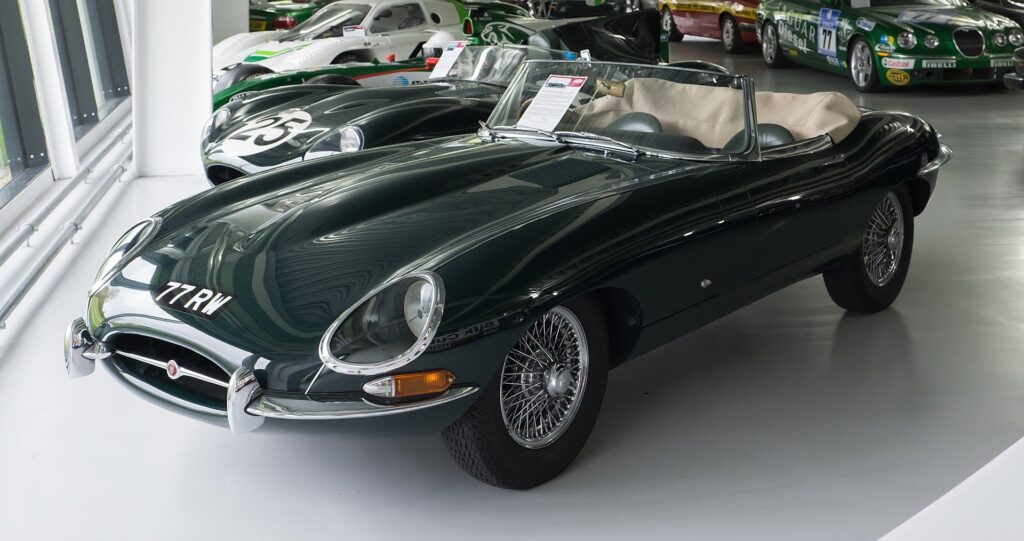
15. **Distinctive Oval Grilles**
The grille of an automobile acts as its primary identifier, its ‘face’ to the world, and throughout history, designers have experimented with myriad shapes and forms. Among the most elegant and instantly recognizable classic elements is the ‘distinctive oval grille.’ This particular shape transcends mere functionality, imbuing a vehicle with a sense of refined sophistication and a clear visual signature that often denotes a specific marque or era.
The ‘1962 Jaguar E-Type,’ widely hailed as one of the most beautiful cars ever made, famously incorporated an ‘iconic oval grille’ into its aerodynamic profile. This choice was not accidental; it complemented the E-Type’s ‘sweeping lines’ and ’rounded tail,’ contributing significantly to its ‘enduring visual appeal.’ The oval shape provided a gentle yet assertive front fascia, a departure from more angular or rectangular designs.
An oval grille suggests a certain grace and classicism, often associated with luxurious or performance-oriented vehicles where every detail was meticulously considered. It creates a focal point that is both elegant and assertive, helping to establish the car’s identity and brand heritage. In an age where grilles can sometimes be overly aggressive or entirely absent, the sight of a beautifully executed ‘distinctive oval grille’ is a powerful reminder of an era when automotive fronts were crafted with artistic intent, making them truly captivating ‘relics of the past’ that continue to inspire.
Read more about: Behind the Design: 10 Iconic Automotive Elements That Shaped Decades of Car Evolution
As we conclude our journey through these 15 extraordinary exterior designs, it becomes abundantly clear that classic cars are far more than just aging machines; they are vibrant repositories of history, engineering, and art. Each design element, from the utilitarian simplicity of the Model T to the avant-garde drama of the Pantera, tells a compelling story of a bygone era’s aspirations and ingenuity. These visual marvels, with their bold lines, innovative forms, and timeless elegance, continue to captivate enthusiasts and serve as a powerful reminder of a time when automotive designers were true artists, crafting rolling sculptures that defied convention. They are relics, indeed, but relics that fiercely refuse to be forgotten, their beauty and engineering brilliance forever etched into the asphalt of history, making every rare sighting a profound appreciation for automotive excellence. Long may their distinctive forms grace the roads, however infrequently.

